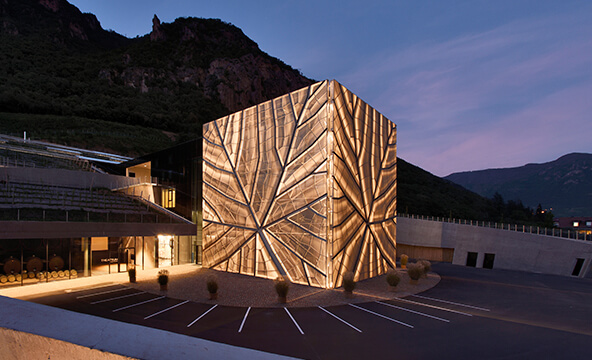In 1908, thirty wine growers in Gries decided to form a cooperative in the climatic spa of Gries. Another winemaking cooperative was founded in 1930 by 18 wine growers located around the hill of S. Maddalena. The objective in both cases was to promote local and autochthonous wines. Today the winegrowers’ cooperative has a membership of 224 families with a shared goal: diversity, passion, enjoyment.
In 1908 the ambitious goal was to produce and market the autochthonous Alto Adige varietals Lagrein and Schiava.
After the Second World War, the Gries Winery was able to establish itself on the German market with its Lagrein Kretzer rosé.
Despite the turbulence caused by the difficult years of the 1970s and 1980s, the winery managed to increase sales of its Lagrein flagship wine and to consolidate its market share through a change of focus in production from quantity to quality.
In response to the wine-growing crisis, the Santa Maddalena Winery also repositioned itself. With its leading varietal – Santa Maddalena, a relatively strong wine made with Schiava grapes – and a quality-first approach, the winery enjoyed considerable success at home and abroad. A key factor was the decision taken in 1971 to define and upgrade the Santa Maddalena territory in the context of the Italian DOC system.
In 2001 the Gries and Santa Maddalena wineries agreed on a merger with the aim of bundling their resources, becoming one of the leading players in Alto Adige and consolidating their range of wines in line with market demand.
In 2018 the cooperative moved to Via S. Maurizio 36: a gleaming cube that rises majestically from the hillside. It houses the offices, the Vinarius Wineshop and the production area, which is located mainly underground and is designed throughout to serve the quality of the wines. The new winery has been built to the low-energy standard in the interest of energy efficiency and sustainability – and the production of ClimateHouse wines.




















